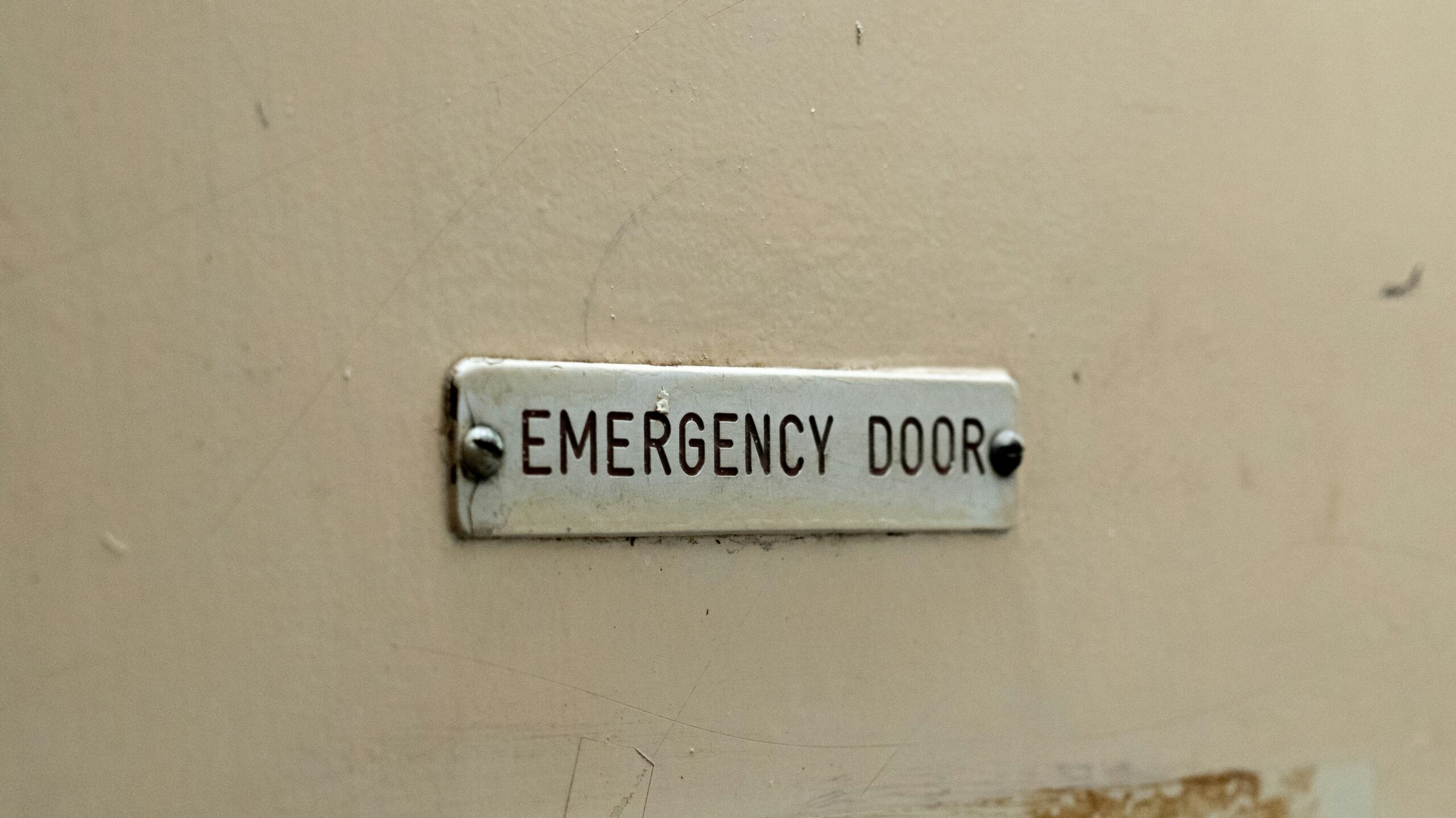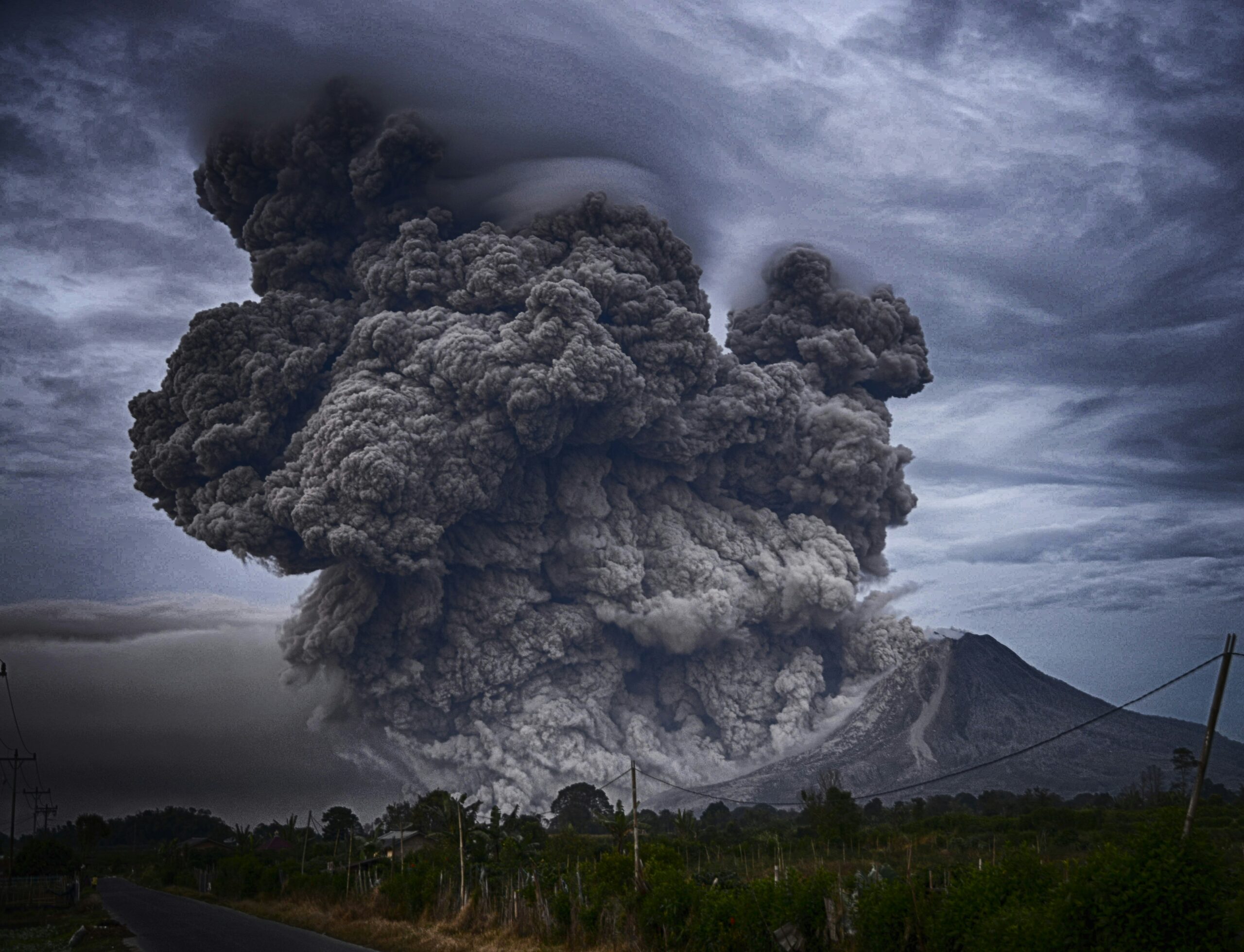In emergency management, preparedness plays a crucial role in ensuring the safety and well-being of individuals and communities when unexpected and potentially harmful situations arise. It involves thorough planning, effective communication, and the implementation of preventive measures to mitigate the impact of emergencies. By being prepared, you equip yourself with the necessary knowledge and resources to respond promptly and effectively, helping to minimize the potential risks and alleviate the impact of emergencies.
Understanding Preparedness in Emergency Management
Emergency management is a complex and multi-faceted field that requires extensive planning, coordination, and preparedness to effectively respond to and mitigate the impact of emergencies. Preparedness, as a key component of emergency management, refers to the actions taken before a crisis or disaster occurs to ensure readiness and the ability to respond effectively.
Defining Preparedness
Preparedness, in the context of emergency management, is the process of anticipating and planning for potential emergencies. It involves comprehensively assessing risks, developing response strategies, and acquiring the necessary resources and training to effectively respond to and recover from emergencies. Preparedness encompasses a wide range of activities, from recognizing potential emergencies to coordinating disaster response efforts.
Overview of Emergency Management
Emergency management is a proactive approach to prevent, prepare for, respond to, and recover from hazards, incidents, and disasters. It aims to reduce the impact of emergencies on individuals, communities, and the environment. Emergency management encompasses four phases: mitigation, preparedness, response, and recovery. While each phase is crucial, preparedness plays a fundamental role in ensuring a swift, efficient, and effective response to emergencies.
Key Elements of Preparedness
Recognizing Potential Emergencies
The first step in preparedness is recognizing potential emergencies. This involves understanding the different types of emergencies that can occur – natural disasters, technological accidents, public health emergencies, and acts of terrorism, to name a few. By being aware of the potential risks and hazards in your area, you can take proactive measures to mitigate their impact and prepare accordingly.
Planning and Preparing for Emergencies
Planning and preparing for emergencies is essential to ensure a coordinated and effective response. This includes developing emergency response plans that outline specific actions to be taken during various scenarios, identifying evacuation routes, establishing communication channels, and stockpiling necessary resources, such as food, water, and medical supplies. Moreover, ensuring that emergency preparedness kits are readily available and regularly updated is crucial in times of crisis.
Training for Emergencies
Training is a vital component of preparedness in emergency management. It equips individuals and response teams with the knowledge and skills required to effectively mitigate, respond to, and recover from emergencies. Training programs may include first aid and CPR courses, search and rescue techniques, incident command system training, and specialized training for specific hazards or industries. By investing in comprehensive training, individuals and response teams can enhance their preparedness and ensure a rapid and effective response.

Importance of Preparedness in Emergency Management
Preventing Loss of Life
One of the primary goals of emergency management preparedness is to prevent the loss of life. By recognizing potential emergencies and developing robust response plans, individuals, communities, and governments can take proactive measures to protect human lives. This includes early warning systems, evacuation plans, emergency medical services, and public education campaigns to promote safety and awareness. The timely and coordinated response to emergencies significantly reduces the risk of fatalities and ensures the safety of those affected.
Minimizing Damage
Preparedness in emergency management also aims to minimize the damage caused by emergencies. It involves adopting measures such as building codes, hazard mapping, and land-use planning to mitigate the impact of disasters before they occur. By identifying vulnerable areas, implementing protective measures, and ensuring adaptive infrastructure, the potential damage to property, infrastructure, and the environment can be significantly reduced.
Speedy Recovery Post-Emergency
Another essential aspect of preparedness is facilitating a speedy recovery post-emergency. By investing in preparedness before a crisis occurs, governments and communities can expedite the recovery process and enable affected individuals to return to their normal lives as swiftly as possible. This includes having adequate resources, such as temporary shelter, medical facilities, and financial aid, readily available, as well as implementing plans for rebuilding infrastructure and restoring essential services.
Role of Government in Emergency Preparedness
Setting Up Legal Frameworks
Governments play a crucial role in emergency preparedness by establishing legal frameworks that outline responsibilities, authorities, and protocols for responding to emergencies. These frameworks vary from country to country but typically involve laws and regulations regarding emergency declarations, mobilization of resources, coordination of response efforts, and public safety measures. By providing a clear legal framework, governments ensure a structured and coordinated approach to emergency management.
Organizing Relief Resources
Governments are responsible for organizing and mobilizing relief resources during emergencies. This includes establishing emergency management agencies, coordinating with various departments and organizations, and ensuring the availability of resources such as emergency response personnel, equipment, and supplies. Governments also provide funding and financial support to facilitate preparedness initiatives and enhance the overall response capabilities of communities and individuals.
Coordinating Disaster Response
Governmental agencies are primarily responsible for coordinating disaster response efforts. This involves establishing command centers, implementing incident command systems, and ensuring effective communication and collaboration between various response teams and stakeholders. Governments also provide guidance, technical assistance, and support to communities in developing and implementing their own emergency response plans. By taking a leading role in coordinating disaster response, governments facilitate a unified and efficient approach to emergency management.

Role of Individuals in Emergency Preparedness
Preparing Personal Emergency Plans
Individuals have a crucial role to play in emergency preparedness. It is essential for each person to develop a personal emergency plan that outlines specific actions and safeguards to be taken in the event of an emergency. This includes identifying safe locations, establishing communication protocols with family members, preparing emergency supply kits, and staying informed about potential hazards and evacuation procedures. By taking the initiative to prepare individually, individuals contribute to the overall resilience and preparedness of their communities.
Understanding Responsibilities
In addition to personal preparedness, individuals must also understand their responsibilities in emergency situations. This includes knowing when to evacuate, how to access emergency services, and how to provide basic first aid or support to others in need. Individuals should familiarize themselves with local emergency management systems, public alert systems, and community resources available during emergencies. By understanding their responsibilities, individuals can respond effectively and help alleviate the burden on emergency response organizations.
Participating in Community Training
Active participation in community training programs is another vital role individuals can play in emergency preparedness. These programs offer comprehensive training in emergency response, disaster management, and community resilience. By attending these trainings and acquiring the necessary skills, individuals become valuable assets in times of crisis. They can assist in search and rescue operations, provide first aid, support evacuation efforts, and help organize post-emergency relief activities.
Role of Communities in Emergency Preparedness
Creating Community Response Plans
Communities also play a critical role in emergency preparedness. By creating community response plans, they can establish a coordinated approach to emergency management. These plans involve identifying local resources, establishing communication networks, and assigning roles and responsibilities to community members and organizations. Community response plans enhance the overall resilience of the community and ensure a rapid and effective response to emergencies.
Helping Vulnerable Members
Communities have a responsibility to support and protect vulnerable members during emergencies. This includes the elderly, individuals with disabilities, children, and those without adequate resources or social support networks. By recognizing and addressing the specific needs of vulnerable members, communities can ensure that no one is left behind during an emergency. This may involve establishing special shelters, transportation services, and support systems tailored to the needs of vulnerable individuals.
Post-Emergency Support
Furthermore, communities play a crucial role in providing post-emergency support to affected individuals. This includes offering temporary housing, food, medical assistance, and psychological support to help survivors recover physically and emotionally. Community organizations, such as non-profit groups and faith-based organizations, often spearhead these efforts by mobilizing volunteers, coordinating donations, and providing essential services to those in need. By rallying together and supporting each other, communities can rebuild and recover from emergencies more effectively.

Challenges in Emergency Preparedness
Lack of Resources
One of the significant challenges in emergency preparedness is the lack of resources. This includes insufficient funding, limited access to necessary equipment and supplies, and a shortage of trained personnel. Overcoming these challenges requires increased investment in emergency management programs, improved resource allocation, and the establishment of partnerships between governments, private entities, and community organizations. By addressing these resource gaps, communities can enhance their preparedness and response capabilities.
Unequal Access to Information
Another challenge in emergency preparedness is the unequal access to information. Information and warnings regarding potential emergencies may not reach all segments of the population, particularly marginalized communities. This can result in delayed or inadequate response efforts, hindering the overall effectiveness of emergency management. Addressing this challenge requires targeted public education campaigns, community outreach programs, and the use of diverse communication channels to ensure that everyone receives timely and accurate information.
Compliance to Procedures
Ensuring compliance with emergency procedures and protocols is also a challenge in emergency preparedness. In times of crisis, individuals and organizations may deviate from established guidelines due to panic, lack of awareness, or other factors. This can hinder response efforts, create confusion, and potentially endanger lives. Overcoming this challenge requires ongoing training, frequent drills and exercises, and public awareness campaigns to emphasize the importance of following established procedures to ensure a coordinated and effective response.
Technological Advancements in Emergency Preparedness
Use of Drones
Technological advancements have greatly influenced emergency preparedness and response. One notable development is the use of drones in emergency management. Drones equipped with cameras and sensors can provide real-time aerial surveillance and help assess the extent of damage, locate survivors in remote or inaccessible areas, and facilitate search and rescue operations. The use of drones improves situational awareness and enables response teams to make informed decisions quickly.
Emergency Alert Systems
Emergency alert systems play a crucial role in disseminating timely warnings and information to the public during emergencies. These systems utilize various communication channels, such as radio, television, mobile devices, and sirens, to alert individuals of potential hazards and provide instructions. Advances in technology have made these alert systems faster, more customizable, and accessible to a larger audience, ensuring that crucial information reaches the public effectively.
Data Analysis for Risk Assessment
Data analysis and predictive modeling have become essential tools in emergency preparedness. By analyzing historical data, geographical information, and other relevant factors, advanced risk assessment models can predict and quantify the likelihood and impact of various emergencies. This helps emergency managers make informed decisions regarding resource allocation, response planning, and mitigation strategies. Data analysis enhances preparedness by identifying vulnerable areas, highlighting potential risks, and facilitating evidence-based decision-making.
Case Study: Effective Emergency Preparedness
Context of the Case Study
In this case study, we will examine the effective emergency preparedness efforts undertaken by City X, a coastal community known for its vulnerability to hurricanes and tropical storms. The geographic location and historical data indicated a high risk of severe storms and flooding, making preparedness crucial for the community’s resilience.
Preparedness Measures Implemented
City X prioritized emergency preparedness by implementing a comprehensive set of measures. First, they developed a robust early warning system that included sirens, mobile alerts, and a dedicated emergency hotline. This ensured that the public received timely and accurate information about approaching storms and evacuation orders. Second, they established an emergency management agency responsible for coordinating preparedness activities, conducting drills and exercises, and maintaining a state-of-the-art emergency operations center. Third, City X focused on community engagement, organizing workshops and training sessions to educate residents about emergency preparedness, evacuation routes, and post-disaster recovery efforts.
Outcome and Lessons Learned
City X’s proactive approach to emergency preparedness paid off during a severe hurricane that struck the region. The early warning system effectively alerted residents, allowing ample time for evacuation. The emergency management agency’s coordination and efficient use of resources enabled a swift and effective response, minimizing loss of life and property damage. Additionally, the community’s high level of preparedness and engagement ensured a smooth recovery process, with community members actively participating in cleanup efforts and supporting those affected.
The case study highlights the importance of prioritizing emergency preparedness, engaging the community, and investing in resources and training. It demonstrates that a proactive approach to preparedness can significantly enhance a community’s resilience and enable a swift and effective response to emergencies.
Future Trends in Emergency Management Preparedness
Improved Communication Technologies
As technology continues to advance, the field of emergency management is embracing new communication tools and platforms. These include social media monitoring and engagement, mobile applications for emergency alerts and information dissemination, and the integration of various communication systems to ensure seamless communication between response teams and the public. Improved communication technologies enhance preparedness by facilitating the timely dissemination of information and fostering public engagement.
Climate Change Planning
Climate change poses significant challenges to emergency preparedness and response. The increasing frequency and intensity of extreme weather events necessitate proactive planning and adaptation strategies. Communities and governments are incorporating climate change considerations into emergency management plans, such as updating flood maps, implementing stricter building codes, and investing in renewable energy sources as part of disaster resilience plans. Climate change planning enhances preparedness by addressing emerging risks and vulnerabilities.
Holistic Community-Based Approaches
The future of emergency management preparedness lies in holistic, community-based approaches. This involves engaging stakeholders from various sectors, including government agencies, community organizations, businesses, and academia, in collaborative planning and decision-making processes. By working together, communities can leverage the diverse skills, resources, and knowledge of these stakeholders to enhance their overall preparedness and resilience. Holistic community-based approaches foster a sense of ownership, promote innovation, and foster long-term sustainability.
In conclusion, understanding and prioritizing preparedness in emergency management are crucial for effectively responding to and mitigating the impact of emergencies. From recognizing potential emergencies to training individuals and communities to coordinating disaster response, every aspect of preparedness plays a significant role in ensuring a swift, efficient, and effective response. By investing in preparedness, governments, individuals, and communities can prevent loss of life, minimize damage, and facilitate a speedy recovery. Furthermore, advancements in technology, data analysis, and communication platforms provide new opportunities and tools to enhance preparedness efforts. By embracing these advancements and adopting holistic, community-based approaches, the future of emergency management preparedness can be further strengthened.

